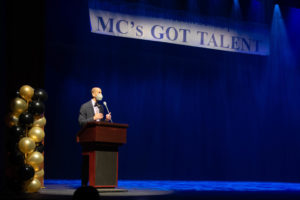Original: March 8, 2011 Issue 12
By: A.M. Elezarof
Contributing Writer
In a special report, A.M. Elezarof examines the scary reality of social security
Kent Sullivan is a worried man. Like many older Americans, the 66-year-old full-time mental health counselor and Social Security recipient has spent many nights contemplating his retirement years. He does not think about his next vacation or how he will enjoy his golden years.
He worries how he will be able to make ends meet if he can not work. “When I was younger, I didn’t think Social Security would be this bad.” Sullivan said. “I don’t have much savings, at least not enough to cover my expenses far into retirement and I receive Social Security benefits that barely cover my needs. I’m terrified what will happen when I can’t work,” said the Dover, PA resident. “(Social Security) is just a disaster.”
If you are like many people today, you probably imagine spending your retirement years exploring the cities and towns that dot the American landscape. Maybe you have thought about starting a new hobby or visiting far-off countries.
That is the American Dream after all: working hard in order to enjoy the fruits of your labor. Most assuredly, you would not imagine working full-time to support your family beyond the age of 65. But this is the scenario for many of the 35 million retirees, like Sullivan, who count on Social Security to help pay for essential living expenses.
As people are living longer they will need more savings to help them through retirement. But the U.S. has never been a country of savings. The Department of Commerce conducts annual studies that show a sad truth: Americans save a paltry 5 percent of their annual income. Five percent of $50,000 is just $2,500. Over a 40 year career, that is $100,000 of savings. How far is that going to get you over a 15 year retirement? With such a low personal savings rate Americans are counting more than ever on the promises of Social Security.
“I’m really scared for young people. I don’t think they realize the awful truth about Social Security,” said Sullivan. With 54 million retired, disabled and widowed recipients and 3.6 million new recipients added every year, Social Security has become a weighty political and economic concern. But through all the commotion and confusion, what do we really know for certain? It has worked for 75 years. What could possibly be wrong with it?
The New Deal
In the 1930’s with the Great Depression showing few signs of recovery and many seniors living below the poverty level, President Franklin Roosevelt signed into law a federal assistance program for the elderly called the Social Security Act. The president reasoned that if Americans could save enough money through government-mandated Social Security withholdings, they could enjoy their golden years instead of worrying about where they would get their next meal.
In order to spread the risk the government withholds 12.4 percent – on only the first $108,000 – of earned income, (half of which is paid by their employer) into a financial pool called The Social Security Trust Fund. As retirees become eligible, they receive benefits based on the amount they contributed. “The message was, you put in what you get out,” said Sullivan.
With a maximum benefit for 2011 of $2,366 per month and an average of $1,177 per month, the average retired couple can typically count on $25,000 annual income to supplement their savings. According to the Congressional Budget Office (CBO), starting in 2011, as the 76 million baby boomers begin collecting Social Security, the trust fund will have its first annual accounting loss: a staggering $45 billion and $600 billion over the next ten years. 2042 is the year – quoted by dozens of Republicans and Democrats alike, various federal agencies and numerous media outlets –the $2.5 trillion surplus trust fund should run out of money.
Kick the Can Down the Road
The 1980’s turned out to be a pivotal decade for the future of Social Security. The U.S. national debt, having grown from $250 billion since World War II to $900 billion by 1980, was only getting worse. The tax-less-spend-more policies of Reaganomics were in full swing, pushing the national debt to $3.2 trillion by 1990. In the mid-1980’s, President Reagan followed through on campaign promises to stimulate the economy with large tax cuts and increased military spending.
However, ballooning annual deficits during the decade, some years as high as $300 billion, began causing political unrest for politicians. To cover the significant deficits, the U.S. Government began tapping into the Social Security trust fund. It was an accounting trick that allowed the government to withdraw money from the trust fund and replace the funds with special non-marketable IOU bonds.
By 2009, President George W. Bush, having used over $1.2 trillion of Social Security funds to pay for prolonged war efforts in Afghanistan and Iraq and large tax cuts, sat on a national debt of $12 trillion; $2.5 trillion owed to the Social Security trust fund. A program that began as prepay-your-own-retirement turned into a defunct government plan that must count on future tax revenue for survival.
As Jonathan Hoenig, a FoxNews contributor, told Moderator Liz Claman: “Social Security is, by definition, a Ponzi scheme. It is Bernie Madoff on the largest scale. They lock you up for things like this. There is no savings, there is no investment, there is no ownership, there is no account with your name on it. They’re just looting you today with the promise that they’re going to loot future generations on your behalf.”
An Aging Workforce
Recent lay-offs, cuts in corporate pension plans, and the stock market, banking and housing meltdowns, have caused financial insecurity for those at or near retirement age. Many retirees, like Mr. Sullivan, continue to work to supplement their modest benefits. According to the National Study of the Changing Workforce (2008) conducted by the Family and Work Institute (FWI), 75 percent of workers over 50 expect to have retirement jobs in the future. More importantly, over half say they have no plans to leave their current employer for at least five years, and 10 percent plan to do the same work until they die. In its report in 2010, the Census Bureau revealed that as many as 25 percent of those over 65 will continue to work by 2016, compared with 20 percent in 2010 and just 13 percent in 2004.
This has caused a seismic shift in the workforce. As fewer people retire from the workforce, many college graduates find themselves competing for fewer jobs. “Many of the people I graduated college with ten years ago have been sporadically employed.” says Erica Black, 32, an unemployed Sociologist who recently returned to college. “And many of their grandparents are still working into their 70’s. It’s no wonder we can’t get jobs.”
The Burden of Social Security
In addition to the burden of the shifting job market, younger generations are also shouldering the burden of Social Security debts. As a result of unfunded Social Security liabilities, Baby boomers have become a major creditor of the U.S. Government and by extension a financial burden on their children and grandchildren.
In fact, some think that by benefiting from tax cuts over the past thirty years, paid in large part by the $2.5 trillion Social Security trust fund, baby- boomers will have double-dipped at the expense of future generations. When informed about Social Security liabilities, Ms. Black admitted she was dismayed. “I don’t see any real solutions. You can’t take it away from seniors” she said. “But if we’re not going to get anything out of it in the end, why should we bother paying into it? Where is the fairness in that?”
Few believe that we can sustain the current system without making significant changes. Many economists say it is not realistic to think that, with a $14 trillion debt we can keep borrowing well into the future. Can we raise taxes? The CBO estimated that if federal tax rates were adjusted to balance the budget and pay for the unfunded Social Security and Medicare liabilities, the 10 percent tax bracket – for those making less than $8,500, would have to rise to 26 percent, the 25 percent tax bracket – for those making less than $83,000, would have to rise to 66 percent, and the highest 35 percent individual and corporate tax rates raised to 92 percent.
Others, like Sullivan, believe we should take smaller steps, like raising the current $108,000 income cap or applying the tax on capital gains income as well. Other solutions recently proposed include only paying benefits to retirees who have assets under a certain amount, say $500,000, or only paying benefits to those retirees who are not employed.
“We can even raise the age that benefits begin,” Sullivan said.
“If that happens we might be able to protect a public trust that’s been promised to Americans.”


















